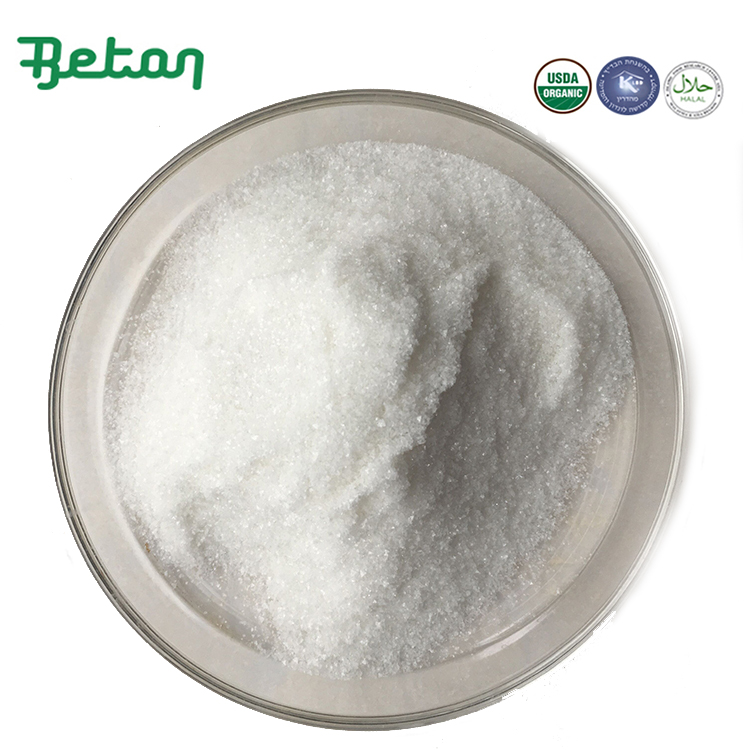-
Categories
-
Pharmaceutical Intermediates
-
Active Pharmaceutical Ingredients
-
Food Additives
- Industrial Coatings
- Agrochemicals
- Dyes and Pigments
- Surfactant
- Flavors and Fragrances
- Chemical Reagents
- Catalyst and Auxiliary
- Natural Products
- Inorganic Chemistry
-
Organic Chemistry
-
Biochemical Engineering
- Analytical Chemistry
- Cosmetic Ingredient
-
Pharmaceutical Intermediates
Promotion
ECHEMI Mall
Wholesale
Weekly Price
Exhibition
News
-
Trade Service
Original: Zhong Kai
Recently, third-party evaluations have been frequently shot and rolled over frequently
.
A few days ago, I just analyzed the big pit of Liujiang snail noodles in the evaluation of the Huangjia laboratory.
In the past two days, there is another evaluation of baby noodles.
It said that some products have heavy metals exceeding the standard, and some nitrates have exploded.
The analysis is straightforward, so lively
.
.
A few days ago, I just analyzed the big pit of Liujiang snail noodles in the evaluation of the Huangjia laboratory.
In the past two days, there is another evaluation of baby noodles.
It said that some products have heavy metals exceeding the standard, and some nitrates have exploded.
The analysis is straightforward, so lively
.
Pregnancy, infant and child products are the most active and the most pitiful in the evaluation field, because this group of people is best to be frightened, and it is easiest to pay for it
.
Let's talk about this hodgepodge of evaluations in detail, involving a lot of indicators, but the analysis of the two most critical indicators, all have problems
.
.
Let's talk about this hodgepodge of evaluations in detail, involving a lot of indicators, but the analysis of the two most critical indicators, all have problems
.
About "Aluminum Exceeded Standard"
Original media report: Some foods may use aluminum potassium sulfate (also known as alum), which is a common aluminum-containing food additive
.
It has the effect of a coagulant, which can make food more gluten, such as in noodles and vermicelli
.
.
It has the effect of a coagulant, which can make food more gluten, such as in noodles and vermicelli
.
Studies have shown that aluminum accumulation in brain tissue will inhibit the activity of various enzymes, resulting in decreased thinking ability and memory loss, which will seriously affect children's intellectual development and bone growth
.
.
At present, the national standard "GB 2760-2014 Standard for the Use of Food Additives" stipulates that the aluminum content in flour products shall not exceed 100mg/kg
.
.
As early as 2008, the European Food Safety Authority adopted a recommendation on the safety of dietary intake of aluminium, which stipulated that the aluminium content in flour products should not exceed 10mg/kg
.
In the following years, flour products from China were often banned from the EU because their aluminum content exceeded this limit
.
.
In the following years, flour products from China were often banned from the EU because their aluminum content exceeded this limit
.
As soon as I saw "exceeded" I knew there was a problem
.
Where does the standard come from? Why haven't I heard of it? There are several common-sense (for food industry folks) mistakes here
.
.
Where does the standard come from? Why haven't I heard of it? There are several common-sense (for food industry folks) mistakes here
.
1.
The European Food Safety Authority (EFSA) is not a risk management department and does not formulate specific limit standards, but only gives scientific opinions and suggestions for risk assessment
.
The "suggestion" mentioned by the media is the picture below, and there is no statement about the limit of aluminum in flour products
.
The European Food Safety Authority (EFSA) is not a risk management department and does not formulate specific limit standards, but only gives scientific opinions and suggestions for risk assessment
.
The "suggestion" mentioned by the media is the picture below, and there is no statement about the limit of aluminum in flour products
.
2.
The EU, like the rest of the world (including China), does not manage aluminium as a pollutant
.
However, EU member states can formulate their own control policies according to their needs, mainly targeting food additives, such as alum and pigmented aluminum lakes, as well as China
.
The EU, like the rest of the world (including China), does not manage aluminium as a pollutant
.
However, EU member states can formulate their own control policies according to their needs, mainly targeting food additives, such as alum and pigmented aluminum lakes, as well as China
.
The EU does have a value of 10 mg/kg for flour products, but it is actually equivalent to China's "risk monitoring reference value" (used in the RASFF early warning system), which also protects domestic companies
.
(Note: This so-called "limitation" has been abolished, because China has reflected the background situation with the EU through the WTO mechanism.
) Why do you say this, you can click on the data below to understand
.
Aluminum is the most abundant metal element in the earth's crust, and the background values of different regions and different species are different
.
So some Chinese products (mainly instant noodles) are blocked by the EU, but this has nothing to do with health
.
.
(Note: This so-called "limitation" has been abolished, because China has reflected the background situation with the EU through the WTO mechanism.
) Why do you say this, you can click on the data below to understand
.
Aluminum is the most abundant metal element in the earth's crust, and the background values of different regions and different species are different
.
So some Chinese products (mainly instant noodles) are blocked by the EU, but this has nothing to do with health
.
3.
The way of ingesting aluminum is usually mainly from the leavening agent in puffed flour products, such as fried dough sticks, biscuits, cakes,
etc.
The aluminum in the noodles is a natural background and is not a major source of aluminum at all
.
Some vegetables and teas, such as spinach (the one with high aluminum content was just added spinach), mushrooms, radishes, lettuce, cocoa, etc.
, also bring in some background
.
According to the national standard, alum is not allowed to be added to noodles, and infant noodles are not allowed to be added
.
And the media is very "chicken thief" to make hints, but it is their usual >
.
Media text: "Potassium aluminum sulfate (also known as alum) may be used in some foods.
.
.
for example, in noodles and vermicelli.
"
The way of ingesting aluminum is usually mainly from the leavening agent in puffed flour products, such as fried dough sticks, biscuits, cakes,
etc.
The aluminum in the noodles is a natural background and is not a major source of aluminum at all
.
Some vegetables and teas, such as spinach (the one with high aluminum content was just added spinach), mushrooms, radishes, lettuce, cocoa, etc.
, also bring in some background
.
According to the national standard, alum is not allowed to be added to noodles, and infant noodles are not allowed to be added
.
And the media is very "chicken thief" to make hints, but it is their usual >
.
Media text: "Potassium aluminum sulfate (also known as alum) may be used in some foods.
.
.
for example, in noodles and vermicelli.
"
4.
The most important thing is to talk about health hazards without intake
.
I won't go into details here, it's nothing more than a variety of theoretical calculations
.
The simple conclusion is that there is no need to consider the health hazards of the natural background aluminum, otherwise it would have been included in the pollutant management
.
The most important thing is to talk about health hazards without intake
.
I won't go into details here, it's nothing more than a variety of theoretical calculations
.
The simple conclusion is that there is no need to consider the health hazards of the natural background aluminum, otherwise it would have been included in the pollutant management
.
Media text: "Studies have shown that aluminum accumulation in brain tissue can inhibit the activity of a variety of enzymes, resulting in decreased thinking ability and memory loss, which will seriously affect children's intellectual development and bone growth
.
"
.
"
In addition, the abolished 10 mg/kg in the EU, and the 45 mg/kg in the figure below, are for one purpose and have nothing to do with safety and health
.
.
About "Nitrate Explosion Table"
Nitrate is also naturally contained in fruits and vegetables, and the content varies depending on the variety and growing conditions, which is why the standard does not limit the nitrate content of fruit and vegetable noodles
.
In 2008, the European Food Safety Authority did a "Analysis of the pros and cons of nitrate intake through vegetables"
.
The conclusion is as follows
.
.
In 2008, the European Food Safety Authority did a "Analysis of the pros and cons of nitrate intake through vegetables"
.
The conclusion is as follows
.
Overall, the estimated exposures to nitrate from vegetables are unlikely to result in ppreciable health risks, therefore the recognised beneficial effects of consumption of egetables prevail.
Translation: We estimate that nitrate intake through vegetables is unlikely to pose a significant health risk, so the benefits of eating vegetables are predominant
.
.
In other words, instead of worrying about the health risks of nitrates in vegetables, worry about the health risks of not eating vegetables
.
.
By the way, forcibly linking nitrates, nitrites, and nitrosamines, or generally scare you that nitrates and nitrites can cause cancer, are bullshit
.
Or the European Food Safety Authority, who concluded that "on the basis of the available evidence, nitrate intake through diet and drinking water does not contribute to an increased incidence of cancer in humans"
.
.
Or the European Food Safety Authority, who concluded that "on the basis of the available evidence, nitrate intake through diet and drinking water does not contribute to an increased incidence of cancer in humans"
.
From the available evidence that nitrate intake from diet or drinking water is not ssociated with increased cancer risk in humans.
In fact, there are still many problems in the entire evaluation report, and I am too lazy to continue the analysis
.
I've said it many times, don't watch reviews, don't watch reviews, don't watch reviews
.
Because you don't have the strength, you can't understand it at all, and the evaluation agency can make you sweat by dragging a few documents and data
.
And I have read so many food reviews, none of them are reliable, they are all serious nonsense
.
.
I've said it many times, don't watch reviews, don't watch reviews, don't watch reviews
.
Because you don't have the strength, you can't understand it at all, and the evaluation agency can make you sweat by dragging a few documents and data
.
And I have read so many food reviews, none of them are reliable, they are all serious nonsense
.
In short, no matter whether you are a constituent party or a research party, learn more about scientific feeding and nutrition matching, this is what is really useful to you
.
As for those evaluations, you can just read them as entertainment, don't believe them
.
.
As for those evaluations, you can just read them as entertainment, don't believe them
.







